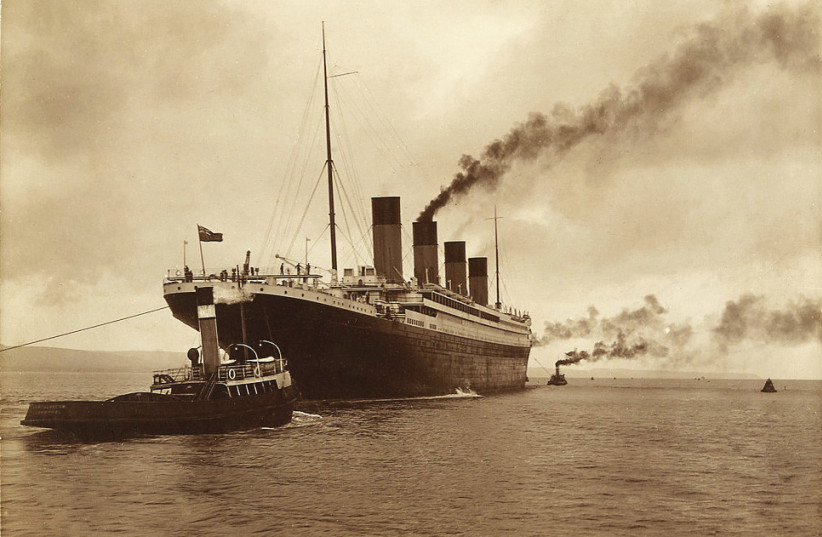An asteroid almost twice the size of the Titanic is set to pass Earth on Saturday, June 24, according to NASA's asteroid tracker.
The asteroid in question was discovered back in 2002 and has been designated 467336 (2002 LT38), as recorded by the Center for Near-Earth Object Studies (CNEOS) at NASA's Jet Propulsion Laboratory (JPL).
The asteroid is one of two passing on June 24, but it follows several others that are set to pass the Earth in the coming days.
A sinking suspicion: How big is the asteroid coming towards Earth in 2023?
NASA has calculated the diameter of asteroid 467336 (2002 LT38) as being as much as 450 meters.
To put that into a more relevant and timely metric, one that is so down to Earth it's practically – or in this case literally – underwater, consider the Titanic.

Yes, arguably the most infamous ship to ever sail the seas. A passenger ship touted as being unsinkable, only to do exactly that when colliding with an iceberg in the Atlantic Ocean, taking 1,500 lives and earning James Cameron billions of dollars at the box office.
The Titanic itself was 269 meters long. In other words, asteroid 467336 (2002 LT38) is – if rounding up a bit – almost twice the size of the Titanic.
What other asteroids are sailing past Earth?
As stated previously, a number of other asteroids are set to come in the days leading up to June 24, with another asteroid passing on that day as well.
Here are those other asteroids, each with its own metric.
- Asteroid 2023 HF1, passing Earth on June 21, has a diameter of around 98 meters, or two-and-a-half times smaller than the Hindenburg airship, which infamously went up in flames in 1937, killing 36 people.
- Asteroid 2023 MU, also set to pass Eart hon June 23, has a diameter of around 93 meters, or just a bit larger than the INS Dakar, the Israeli submarine that mysteriously sunk while en route to Israel in 1968.
- Asteroid 2008 LG2, passing by Earth on June 24, has a diameter of around 54 meters, which is around four-and-a-half times the size of a Lockheed Model 10 Electra airplane, which is what Amelia Earhart was flying when she mysteriously vanished in 1937.
Like an iceberg to a ship: Is an asteroid going to hit the Earth in 2023?
Asteroid 467336 (2002 LT38), as well as all the other ones preceding it, are set to give the Earth a wide berth in their expected flybys, with this Titanic-sized asteroid set to pass at a distance of around 6.6 million kilometers. On a cosmic scale, that is somewhat close, but nowhere near close enough to be a matter of concern.
That's fortunate too, because if an asteroid as big as this one were to hit the Earth, the result would be a lot worse than the Titanic's sinking.
According to estimates by experts from Israel's Davidson Institute of Science, the educational arm of Israel's Weizmann Institute of Science, an asteroid this big could destroy an entire continent if it impacted the Earth.
But smaller ones have already hit the Earth this year, such as asteroid 2023 CX1, which impacted near Normandy, France, back in February, and that didn't result in any damages.
The unsinkable asteroid? Do we have any way to stop an asteroid from hitting the Earth?
Luckily, technology is now far more advanced today than it was in 1912 when the Titanic sank. Scientists in the field of planetary defense have been hard at work trying to develop methods of protecting the Earth, should an asteroid come calling.
So far, one method, kinetic deflection, seems the most promising, as evidenced by NASA's Double Asteroid Redirection Test (DART) Mission, which successfully punched an asteroid, altering its orbit.
But sadly, as successful as our efforts have been to protect the Earth from asteroids, our efforts at finding ways of bringing the wreckage of the Titanic back to the surface haven't been as fortunate.
